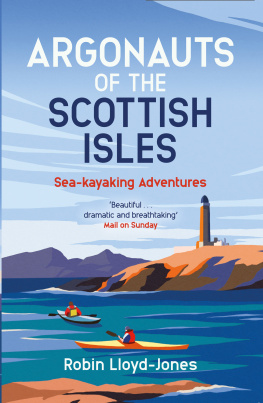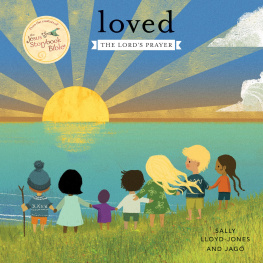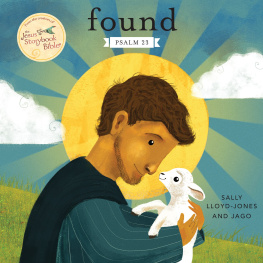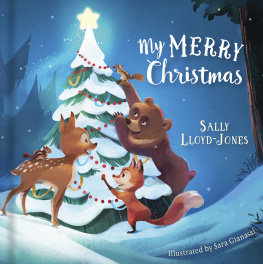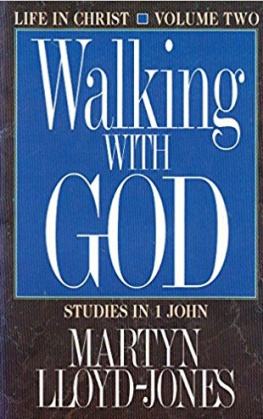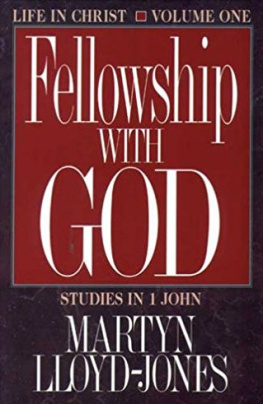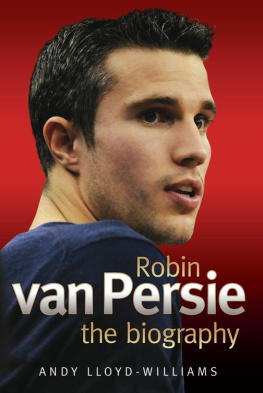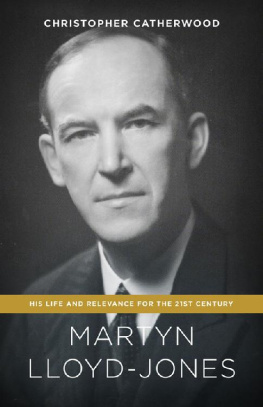Robin Lloyd-Jones - The Sunlit Summit
Here you can read online Robin Lloyd-Jones - The Sunlit Summit full text of the book (entire story) in english for free. Download pdf and epub, get meaning, cover and reviews about this ebook. year: 2013, publisher: Sandstone, genre: Detective and thriller. Description of the work, (preface) as well as reviews are available. Best literature library LitArk.com created for fans of good reading and offers a wide selection of genres:
Romance novel
Science fiction
Adventure
Detective
Science
History
Home and family
Prose
Art
Politics
Computer
Non-fiction
Religion
Business
Children
Humor
Choose a favorite category and find really read worthwhile books. Enjoy immersion in the world of imagination, feel the emotions of the characters or learn something new for yourself, make an fascinating discovery.
- Book:The Sunlit Summit
- Author:
- Publisher:Sandstone
- Genre:
- Year:2013
- Rating:5 / 5
- Favourites:Add to favourites
- Your mark:
- 100
- 1
- 2
- 3
- 4
- 5
The Sunlit Summit: summary, description and annotation
We offer to read an annotation, description, summary or preface (depends on what the author of the book "The Sunlit Summit" wrote himself). If you haven't found the necessary information about the book — write in the comments, we will try to find it.
The Sunlit Summit — read online for free the complete book (whole text) full work
Below is the text of the book, divided by pages. System saving the place of the last page read, allows you to conveniently read the book "The Sunlit Summit" online for free, without having to search again every time where you left off. Put a bookmark, and you can go to the page where you finished reading at any time.
Font size:
Interval:
Bookmark:


.
13 Ben Humble, courtesy of Roy Humble
4, 1523 Douglas Scott, courtesy of Audrey Scott
5 J.E. McEwan
6, 7, 10, 11 SMC Image Archive
13, 14 Imperial War Museum
8, 9 JMCS Archives
12 Courtesy of Anne Amos
24, 25 Tom Weir, with permission of National Library of Scotland, courtesy of Rhona Weir
26 J. Stephens Orr
2731 Royal Geographical Society
32 Alpine Club
1 Robin Lloyd-Jones
2, 4, 11 Michael Cocker
Cover image, 3, 5, 710, 15 Douglas Scott, courtesy of Audrey Scott
6, 18 BBC and Triple Echo Films
12 John Foster
13 University of Strathclyde Library, Department of Archives & Special Collections
14 Ken Crocket
16 J.M. Dent & Sons Ltd.
17 National Trust for Scotland
13 Sallie Lloyd-Jones

I am grateful to the Scottish Arts Council (later to become Creative Scotland) and to The Authors Foundation (administered by the Society of Authors) for generous funding which, at various stages, has sustained the research and writing of this book over a period of four years.
I wish to acknowledge a very special debt to Robert Aitken who has been my mentor throughout the production of this biography. His knowledge of all things related to Murray is unrivalled. This he has generously shared with me, supplying me with books, documents, contacts, information and much good advice. The Sunlit Summit could not have been written without his help.
Special thanks are also due to Robin Campbell, The Scottish Mountaineering Clubs archivist, for pointing me towards a wealth of useful material; and to Michael Cocker who made available to me the results of his own research into aspects of Murrays life, and has allowed me to make extensive use of his annotated Chronology of Murrays 193545 climbs.
Murray was widely respected and admired and this is reflected in the long list of people who were eager to help me celebrate his life and achievements and to offer their assistance. In particular I would like to thank Penny Aitken, Prof. Gavin Arneil, Richard Balharry, Chris Bartle, Dr Donald Bennett, Prof. Ian Boyd, Bill Brooker, Margaret Brooker, Peter Broughan, Alastair Cain, Ken Crocket, Mark Diggins, Elizabeth Dutton, Douglas Elliot, Richard Else, Diana Foreman, John Foster, Dr Abbie Garrington, Ann Gempel, Terry Gifford, Prof. David Guss, A.H. Hendry, David Hewitt, Joy Hodgkiss, Glyn Hughes, Roy Humble, Tomoko Iwata, David Jarman, Bridget Jensen, Dr Michael Jepps, Sir John Lister-Kaye, Jimmy Marshall, John Mayhew, Malcolm McNaught, Rennie McOwan, Findlay McQuarrie, Amy Miller, Prof. Denis Mollison, Graham Moss, Charles Orr, Malcolm Payne, Jim Perrin, Tom Prentice, Dr Martin Price, John Randall, Roger Robb, Jean Rose, Marjory Roy, Des Rubens, Audrey Scott, Gordon Smith, Roger Smith, Hannah Stirling, David Stone, Suilvan Strachan, Greg Strange, Maud Tiso, Russell Turner, Dr Frances Walker, Dr Adam Watson, Rhona Weir, Felicity Windmill, Susan Wotton, Alan Zenthon, Ted Zenthon.
In my research the following organisations were especially helpful: The Alpine Club, Buckfast Abbey Archives, The Glasgow Academy, Imperial War Museum, Island Book Trust, Junior Mountaineering Club of Scotland, John Muir Trust, the Meteorological Office, Mitchell Library, The National Archives, National Library of Scotland, the National Trust for Scotland, Random House Group Archive & Library, Royal Scottish Geographical Society, Scottish Mountaineering Club, Scottish Natural Heritage, University of Strathclyde Archives, Triple Echo Films. My thanks go to the officers and staff of these organisations.
All sources of quotations or special insights have been acknowledged in the notes for each chapter. The sources of the photographs are also acknowledged. My thanks to all concerned for permission to use their work. My thanks, too, to the authors listed in the Bibliography. Not all of them are mentioned in the text, but they influenced my thinking nonetheless.
I am most grateful for the helpful comments made on the draft text by Robert Aitken, Michael Cocker, Andrew Muir, Jim and Olive Muir, Deborah Nelken, and members of the Helensburgh Writers Workshop.
The support and encouragement of my family has been important to me during this project. This includes hours of secretarial work by my grand-daughter, Chloe da Costa, research advice from my cousin Angharad Williams, help in solving various computer problems from my niece, Julia Rardin and her son Stephen, and proof-reading and map-drawing by my wife Sallie. To the latter also goes my gratitude for her patience and understanding.
Finally, I would like to thank Robert Macfarlane for his support and for writing such an insightful Foreword to this book; and Robert Davidson, my editor at Sandstone Press, for his cheerful encouragement throughout the project.

The term essay (essai), so familiar to us now, was first coined by Michel de Montaigne in 1580 to mean a short prose discussion of a particular subject. Montaigne made his noun out of the verb essayer, which in Renaissance France connoted variously apprendre par experience (to learn from experience) and prouver (to test or undergo). Implicit in the essay form at its birth, therefore, was a sense of exploration. To essay was to try but also to be tried; it involved discovery, but without clear promise of outcome.
W.H. Murray was in life, as on the page, an essayist. Mountaineer, writer, explorer, philosopher, conservationist; hob-nailed aesthete, bank-clerk mystic, secular monk, intellectual knight-errant: he was all of these things, and he was them all adventurously, for the key criterion of adventure was, in his definition, uncertainty of result. He climbed as he wrote as he meditated as he lived: exhilarated by the endeavour and unsure of the conclusion. Que scay-je? was Montaignes motto (What do I know?) and it might also have been Murrays, for like Montaigne he understood that to establish the extent of ones knowledge is necessarily also to establish the extent of ones ignorance. Almost all of Murrays writing not just his best-known essays glimmer with the evidence of things not seen, and are devoted to those kinds of experience that can only be glimpsed or intuited, rather than seized and simply scrutinised. Into the heart of mountain literature, Murray smuggled the spirit.
His greatest essays are prose canticles in terms of pattern and beauty; they ring with fierce joy and sharp wit; and they are also (quietly, unobtrusively) attempts to express the ineffable. Several of their scenes are blazed onto my memory, and have come to influence my own mountain days: swimming in the sea-lochs of Skye, bone-tired but mind-blown; or a winter dusk on high ground, with the wide silent snow-fields crimsoned by the rioting sky, and the frozen hills under the slow moon. Yes, Murray knew how to hear what he once called the worlds song, and he knew how to catch something of that song in language also. Deep in an essay on Glencoe, he talks of those uncommon places where the natural movement of the heart is upwards. His essays are just such places they leave you shifted, lifted.
Font size:
Interval:
Bookmark:
Similar books «The Sunlit Summit»
Look at similar books to The Sunlit Summit. We have selected literature similar in name and meaning in the hope of providing readers with more options to find new, interesting, not yet read works.
Discussion, reviews of the book The Sunlit Summit and just readers' own opinions. Leave your comments, write what you think about the work, its meaning or the main characters. Specify what exactly you liked and what you didn't like, and why you think so.


